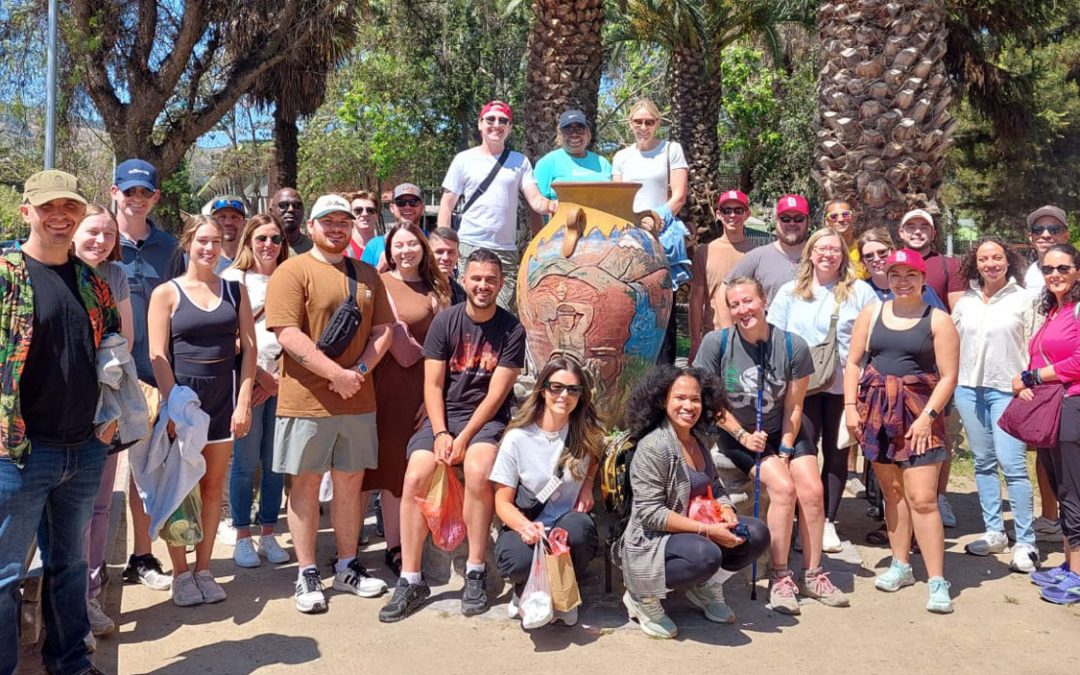
Associate Professor Lon Chubiz is part of a team of researchers, led by colleagues at the University of Idaho, studying the resilience of forest trees and microbes in the face of drought and fire with support from a six-year, $15 million grant from NSF’s Biology Integration Institutes program. (Photo by Derik Holtmann)
Lon Chubiz was caught off guard and a little confused when first contacted by Tara Hudiburg and her colleagues in the Department of Forest, Rangeland and Fire Sciences at the University of Idaho last year.
They were applying for a grant from the National Science Foundation to study how stress caused by increased drought and wildfires is impacting the resilience of forests and their ability to recover. They wanted to see if Chubiz, an associate professor with expertise in microbiology at the University of Missouri–St. Louis, would join their team.
“I think my initial reaction was like, ‘Well, I’m not a forestry person,’” Chubiz said.
But as he learned more about what they were looking to investigate and the questions they were trying to answer, it all made sense. At the heart of their proposal was a desire to understand the relationship between forest trees and the microorganisms found in the soil. Chubiz has made microbes living in extreme environments – like the acidobacteria found in these high-latitude, boreal forests – a major focus of his work.
“We are not just investigating how trees or microbes respond but how organisms depend on each other to survive,” Hudiburg said about the research in a news release from the University of Idaho. “Is this extra stress going to change how these ecosystems respond to climate change? Will they continue to mitigate climate change through carbon sequestration? Will they get better at it? Is there anything we can do to improve resistance? Those are the questions we’re asking.”
Chubiz was intrigued and signed on to the proposal.
“There’s a topical relevance to it,” he said. “As scientists, we’re not often presented with opportunities to do really salient, immediately temporally relevant science. It’s hard to say no when you fit into a space that allows you to ask important questions with the things that you’re already excited to work on.”
In May, NSF awarded the team a six-year grant, totaling $15 million, to pursue the project. The award comes from NSF’s Biology Integration Institutes program, which was created to support diverse and collaborative teams to explore critical biological questions that span multiple disciplines through research, education and training.
It is the largest federal grant the University of Idaho has ever received, and it will support the establishment of the EMBER – “Embedding Molecular Biology in Ecosystem Research” – Institute.
Chubiz is one of several researchers from around the country and across biological disciplines – including molecular and cellular biology, organismal physiology and ecosystem sciences – who’ve joined the project. Others include Winslow Hansen from the Cary Institute of Ecosystem Studies; N. Cecilia Martinez-Gomez from University of California, Berkeley; Emily Graham from Washington State University; Will Wieder from the National Center for Atmospheric Research; Laura Laumatia from the Coeur D’Alene Tribe; and Chaun Macqueen and Parker Mullins, both from the Bonneville Environmental Foundation.
For his involvement, Chubiz is slated to receive $1.2 million in funding over the next six years.
His work will begin by homing in on the microbes found in the field site the team is working in and matching it with model acidobacteria he’s been studying in his lab. He’ll work to apply similar stresses in a controlled environment that they encounter naturally in forest soil to gain insight into how they are surviving in post-fire soil environments.
“What we do know is that in post-fire soils and post-drought soils, we see an enrichment of these bacteria, so their frequency appears to be higher,” Chubiz said. “What I’m interested in understanding is how do they survive those events, how do they tolerate the world after those environmental changes in forests, and how are they involved in transforming the soils to become more habitable for trees – primarily conifers – and how do they work to help establish productive ecosystems?”
The work builds on research Chubiz has been doing on the same bacteria over the past three years as part of his NSF CAREER Award that he received in 2021.
“That funding and that research has enabled my involvement to ask bigger and different questions that relate to these microorganisms,” Chubiz said.
Others are working at a grander scale, building what Chubiz described as a giant deck that will allow them to deny water to particular trees.
Climate change has upended these forest environments, leading to greater instances of drought and more fires like the ones that raged in Western Canada last summer, producing smoke that impacted the air quality all the way to New York City.
Those events impact everything from the lumber industry – and how it affects the cost of building materials – to human health, so there’s great interest in understanding how forests are responding.
Ultimately, Chubiz and his colleagues would like to be able to identify tangible ways to intervene and help plants and microorganisms re-establish themselves after fires.
He is excited about what he will gain from being part of the team.
“It’s an opportunity for me to learn a lot more about how other scientists working at different scales think in the questions that they ask,” Chubiz said, “and what sort of data they need to understand and answer the questions they’re interested in.”














